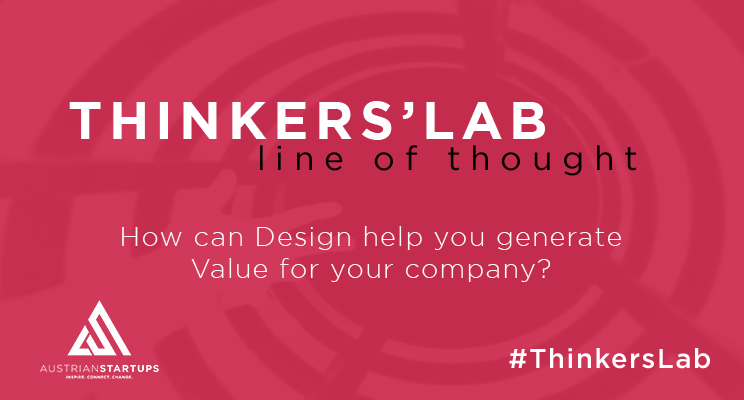Think of your latest experience as a customer. What was great, what was missing? Did you find what you were looking for while browsing a store? How easy was it to get support on a purchase you made? Did you discover a new feature after updating your favourite app?
All of these experiences have two things in common. First, they can make or break a business. And second – those experiences are all subject of good design.
“People are constantly looking for new and better ways of doing things”, according to Katie Dill, VP of Design at Lyft (via McKinsey). Her role is at the intersection of design and business, which proves to be a success factor not only for Lyft. Research shows that design-led companies have 32% more revenue than other companies.
Maurizio Poletto, Managing Director at George Labs, is one of the design professionals that transitioned from his role as owner and Creative director of his own agency into to one of the biggest banks in Austria and CEE. Following his desire to make a profound difference, his mission is to help people understand how banking works, making sure they can take care of their money since banking is among the most important things in life “after love and health”.
While more and more design professionals that enter the C-suite, it is not really clear what the CDO (Chief Design Officer) is accountable for (read more here). Paulo Ferreira, Creative Director at Braintribe works with people who approach him at a very early stage of a project. He uses his role as an external advisor to challenge ideas from the beginning. In his experience, business and design priorities are often very different. Are CEOs lacking understanding for creativity? Do designers need more training in business and economics?
What matters in the end, for designers as well as for CEOs, is the satisfaction of the end-user. Our poll among aspiring entrepreneurs showed that 95% see the end user happiness as the best business decision driver. Seeing opportunity and solving problems are the two unifying objectives of design and business, tackled from different perspectives and with different skills.
To generate business value from design, you have to be clear about your goals, needs and available resources:
Just starting out with your company?
Nothing wrong with templates that can be edited. Unless you have a knack for design, getting professional advice can help you balance uniqueness and familiarity. You want to be memorable when you are scaling your business.
Do you want to improve your product and challenge your ideas?
Onboarding a designer or agency from the beginning can be a valuable asset, testing and challenging your ideas and goals before going down the wrong road. If the designer has a clear understanding of your business goals, she or he can help you find new opportunities.
Do you want to foster a culture of creative experimentation?
Think of starting your in-house design department! Look for the right attitude that matches yours and discard factors like age or experience – you might have to do some convincing that working for one company provides many opportunities and is everything but boring.
Uncertain times require improved problem-solving strategies. Bringing in different perspectives and skills, like those of a designer, can be the opportunity to find and solve new problems that have not been addressed yet. As Tim Brown, CEO of IDEO argues in this article: “I believe that this moment will turn out to be one where design and creativity show their essential value“.
How important is design for your business? Are you implementing creative thinking to your problem-solving process? What is your opinion on working with external agencies vs. having an in-house design department?






